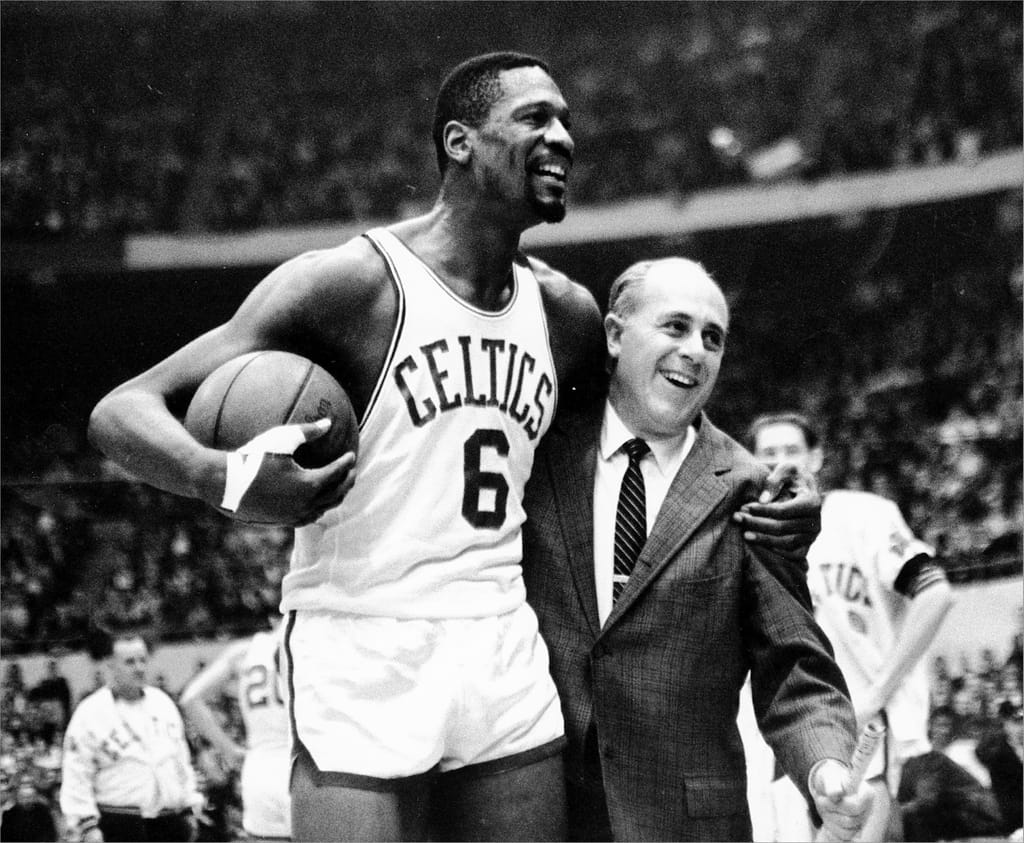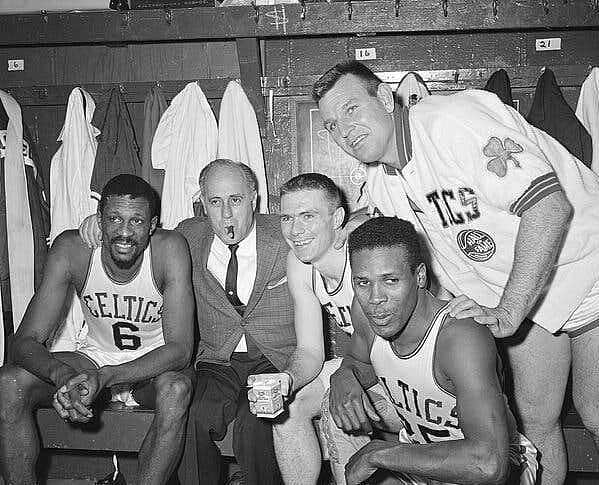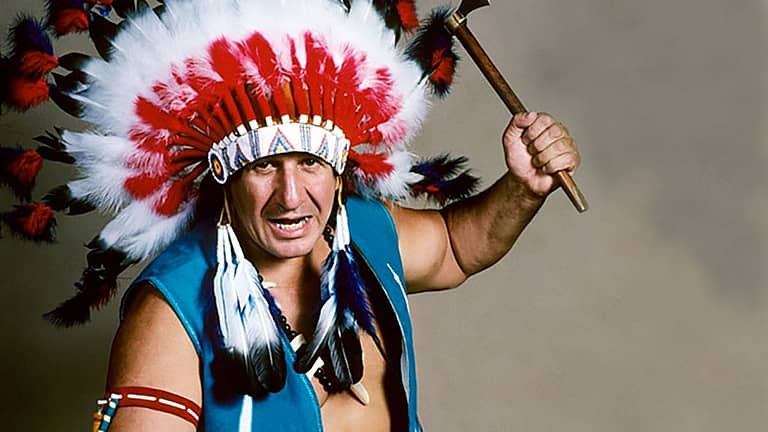The Tao and Legacy of Red Auerbach
“The Boston Celtics aren’t just a team, they’re a way of life”
“The only correct actions are those that demand no explanation and no apology.”
“We like our players to play for fun and to be happy rather than afraid. It’s like that in any business. If you have employees who work through fear, you’re not going to get any ingenuity out of them. You’re not going to get any employees who will take a gamble or come up with ideas. All you’ll have are robots that are going to do their jobs, have a low-key approach, stay out of trouble. They’ll put in their hours and go home. But I’d rather have it the other way.”
-Red Auerbach
For their first four seasons, the Boston Celtics, founded to fill open dates at both Boston Garden and Boston Arena, were abject losers. On the court, they recorded a woeful won-loss record of 89-147 for a winning percentage of .377. Off the court, they resorted to gimmicks such as scheduling a doubleheader with Somerville High School, while also paying team forward and former Somerville High great Tony Lavelli a bonus to play his accordion at halftime for home games.
In 1950, owner Walter Brown, desperate to save his franchise, hired Arnold “Red” Auerbach as both head coach and general manager. In short time, it turned out to be a seismic move that not only reversed the fortunes of the Celtics but also changed the course of basketball history.
During his time as Celtics head coach (1950-66), general manager (1950-1985), and President (1970-1997, 2001-2006), Auerbach led his team to sixteen of the franchise’s seventeen world championships, coached 15 Hall of Famers, and literally wrote the book on basketball. His groundbreaking volume “Basketball for the Player, the Fan, and Coach” was translated into seven languages and remained in print for six decades. It remains the single best study of the game ever written.
Almost equal to his role at having established the winningest tradition in professional basketball, Auerbach also served as a teacher/mentor to a generation of coaches and executives, most notably a group of five African-American former Celtics and future Hall of Famers who achieved greatness in coaching and management.
Their stories are as follows:

Bill Russell
Head Coach/ Boston Celtics 1966-67- 68-69
Regular Season won/lost 162-83 Playoffs won/lost 28-18
2 World Championships: 1967-68 and 1968-69
Head Coach /Seattle Supersonics 1973-74 – 1976-77
Regular Season won/lost 162-166 Playoffs won/lost 6-9
Head Coach/ Sacramento Kings 1986-87
Regular Season won/lost 17 – 41
“When Red and I had started to discuss my becoming coach, there were some things we didn’t have to say. For example, when I was finally named publicly, I didn’t know that I had just become the first African-American coach in the history of major league sports. Everybody was talking about breaking the color barrier, and all this “Jackie Robinson of basketball” stuff. Yet from the moment Red and I agreed I’d be coach, nothing about race ever came up in our conversations. It did not cross our minds. In fact, the first hint of race appeared in a newspaper headline the next morning: “Russell First of His Race.” The first time it came up to Red and me was at the press conference in the Hotel Lenox to announce the change officially. After Red introduced me, I stepped up to take questions, and a reporter said, “You’re the first Negro coach of any major league sport. Can you do the job impartially, without any prejudice in reverse?” I said, Yes!”
-Bill Russell from “Red and Me” by Bill Russell with Alan Steinberg
“Look, it’s no big deal. I just did what I thought was best for our team. If it was about anything else, I wouldn’t have offered Russell the job. Or he wouldn’t have taken it.”
-Red Auerbach from “Red and Me” by Bill Russell with Alan Steinberg
Tom Sanders
Head Coach/ Boston Celtics 1977-78 -1978-79
Regular Season won/lost 23-39
In a thirteen-season NBA career spent entirely with the Celtics, Tom Sanders was a member of teams that captured seven of their NBA record of eight straight world championships. Following his retirement as a player in 1973, he was hired by Harvard as head coach of the men’s basketball team, making him the first African-American to serve as the head coach of any sport in Ivy League history. Five years later he was named Celtics head coach as successor to former teammate Tom Heinsohn. After serving for a little over one season, he moved to the NBA where he started the groundbreaking Rookie Transition Program, the first such program in North American professional sports.
“Do what you do best. All the extras-the headlines, the ovation-don’t count as much as winning. It was a much bigger claim to say I was a part of the world-champion Celtics than to say I averaged 35 points for an also-ran. I had what a lot of All-Stars wanted but couldn’t have-championships. And cashing the checks that goes with them covers a lot, too.”
-Tom Sanders from “The Picture History of the Boston Celtics” by George Sullivan
KC Jones
Head Coach/ San Diego Conquistadors-ABA 1972-1973
Regular Season won/lost 30-54
Head Coach/ Capital and Washington Bullets-NBA, 1973-1974 -1975-76
Regular Season won/lost 155-91. Playoffs won/lost. 14-17
Eastern Conference Champions 1974-75
Head Coach/ Boston Celtics 1983-1984 – 1987-1988
Regular Season won/lost 308-102. Playoffs won/lost 73-37
2 World Championships: 1983-84 and 1985-86
Head Coach/ Seattle Supersonics 1990-1991 – 1991-1992
Regular Season won/lost 59-59. Playoffs won/lost 2-3
The defensive specialist spent his entire ten-year NBA playing career with the Celtics, where he was a member of teams that captured eight straight world championships. Following his retirement in 1967 he served as head coach at Brandeis University followed by coaching stints as an assistant at Harvard, assistant with the Los Angeles Lakers, head coach of the ABA San Diego Conquistadors and Washington Bullets, and assistant jobs with Milwaukee and Boston before being named Celtics head coach in 1983. In his four seasons as Celtics head coach, he established franchise records for both the regular season and playoff win percentages with .751 and .637 respectively.
“For me, however, a basketball team at its best is like a great musical group. Each member must contribute what is required at the precise moment and yet, like a great jazz band, there must be respect and confidence in the exceptional talents to allow them spontaneous execution. Harmony is essential in the making of a winning team. Being good at playing one-on-one basketball is not enough. There must be a team feeling. Players who have exceptional talent but do not want to give their all for the team are better off elsewhere. A winning team is no place for stars who think they shine brighter than the rest of the team.”
-KC Jones from “Rebound, The Autobiography of KC Jones and An Inside Look at the Champion Boston Celtics” by KC Jones with Jack Warner
“I have the finest research book in the world available to me. That’s Red. He’s an encyclopedia of basketball. I listen to him and take advantage of his knowledge.”
-KC Jones from “Rebound, The Autobiography of KC Jones and An Inside Look at the Champion Boston Celtics” by KC Jones with Jack Warner
Wayne Embry
First African-American general manager (Milwaukee Bucks, 1972-79) and team President (Cleveland Cavaliers, 1994-2003, Toronto Raptors, 2006) in NBA history. Currently serves as Senior Advisor for the Raptors.
Nicknamed “The Wall,” the rugged center served as Bill Russell’s backup from 1966-68, winning an NBA title in his final season in Boston. He was claimed by the Milwaukee Bucks in the 1968 NBA expansion draft where he was named the team’s first captain.
“Our greatest Cincinnati teams could not beat the Celtics. Now I had a chance to join them instead. I learned more than I could have ever imagined. I thought I knew the Celtics from playing against them so many times as an opponent. But it was different being on the inside. Being with Red and the Celtics was equivalent to getting a master’s degree in social science, psychology, management, finance, and history-all skills I would use later in life.
First, there was Arnold “Red” Auerbach. Red was the ultimate team builder. He was a master of managing people. He was a great motivator because he made an attempt to know and understand each person. He knew the needs of his players emotionally and mentally. He respected each player and his family and welcomed all of us to the Celtics. He had great compassion and created a family atmosphere.
He understood chemistry. He would take players who failed elsewhere and make them winners by restoring their confidence. He taught me things about people that were universal in nature, about qualities in people that all of us hold dear and close to our hearts to this very day. Red may not have been the best X-and-O coach. He ran only six plays, although there were options off those plays. But he believed if you competed, concentrated, and executed you could win.”
-Wayne Embry from “The Inside Game, Race, Power, and Politics in the NBA” by Wayne Embry with Mary Schmitt Boyer
John Thompson
Center John Thompson served as Bill Russell’s backup from 1964 -66, during which time he was a keen observer of Red Auerbach while capturing two world championship rings. Following his playing days, he coached St. Anthony’s High School in his hometown of Washington, D.C., before accepting an offer to coach Georgetown University in 1972. At Georgetown, he led a program that became a competitive and cultural phenomenon. In seven years, especially after the formation of the Big East in 1979, his Hoyas rose from perennial also-rans to national prominence showcasing the talents of such stars as Patrick Ewing, Allen Iverson, Dikeembe Mutombo, and capturing NCAA titles in 1984. His uncompromising, often gruff, demeanor deflected pressure from his team. He also challenged the officialdom at the NCAA regarding what he viewed as the racist overtones of strictures such as Proposition 48, a rule that curtailed financial aid to recruits who didn’t meet strict academic standards. Such stands, combined with the success of his squad elevated him to iconic status in the Black community and cast his Hoyas as nothing less than folk heroes.
“I’ve never been around a man who managed men any better than Red Auerbach. Particularly the egos he had to deal with, the cross cultures he had to deal with, and all the variations in the kind of people that I saw him be associated with.”
-John Thompson, commenting on his former coach in 2006
“I’m not interested in being the first or only Black doing anything. Because it implies that in 1984, a Black man finally became intelligent enough to win an NCAA title, and that’s a very misleading thing.”
-John Thompson after becoming the first Black head coach to win a men’s NCAA Division 1 basketball championship.
(Richard A. Johnson)






